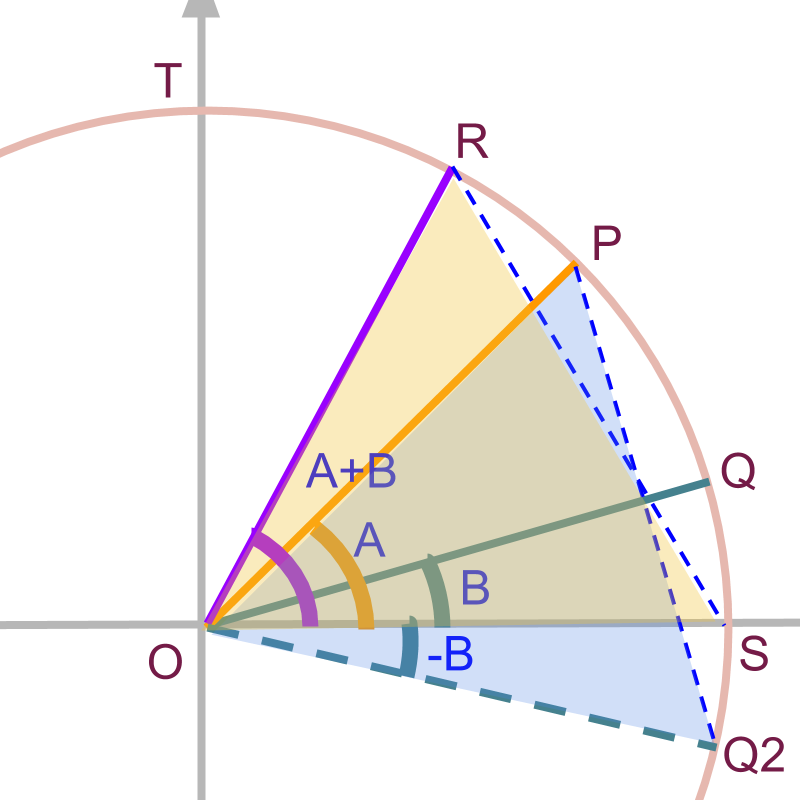
what you'll learn...
sin(A+B)
 » the coordinates of points
» the coordinates of points
→
→
→
→
→
» equate the distance
»
cos(A+B)
 » equate the distance
» equate the distance
»
problem definition
Consider points and with angles and in unit circle as shown in the figure.
The point is
The point Q is

In the given figure, point is for angle .
The point R is .
In the given figure, coordinates of , and are given. Can coordinate of be calculated?
In other words, given the trigonometric ratios of A and B , can we compute trigonometric ratios of ?
proof

In the modified figure, point is for angle .
The point is
As and .
In the given figure, consider point .
the angle
In the given figure,
In the given figure:
.
That is, the angle subtended by the two chords and are equal.
In the given figure, the coordinate of is and the coordinate of is . So, the Square of length of chord, using the distance formula, is
Square of length of chord is calculated as follows.
In the given figure, the coordinate of is . and the coordinate of is .
The square of length of chord is
Square of length of chord is calculated as follows.
Equating the square of lengths of chords and .
This proves
proof for cosine

To compute the value of the enclosed figure is used and the proof is outlined below.
equating these two
summary
Outline
It is advised to do the firmfunda version of "basics of Trigonometry" course before doing this.
The outline of material to learn "Advanced Trigonometry" is as follows.
Note: go to detailed outline of Advanced Trigonometry
→ Unit Circle form of Trigonmetric Values
→ Trigonometric Values in all Quadrants
→ Trigonometric Values or any Angles : First Principles
→ Understanding Trigonometric Values in First Quadrant
→ Trigonometric Values in First Quadrant
→ Trigonometric Values of Compound Angles: Geometrical Proof
→ Trigonometric Values of Compound Angles: Algebraic Proof
→ Trigonometric Values of Compound Angles: tan cot
→ Trigonometric Values of Compound Angles: more results